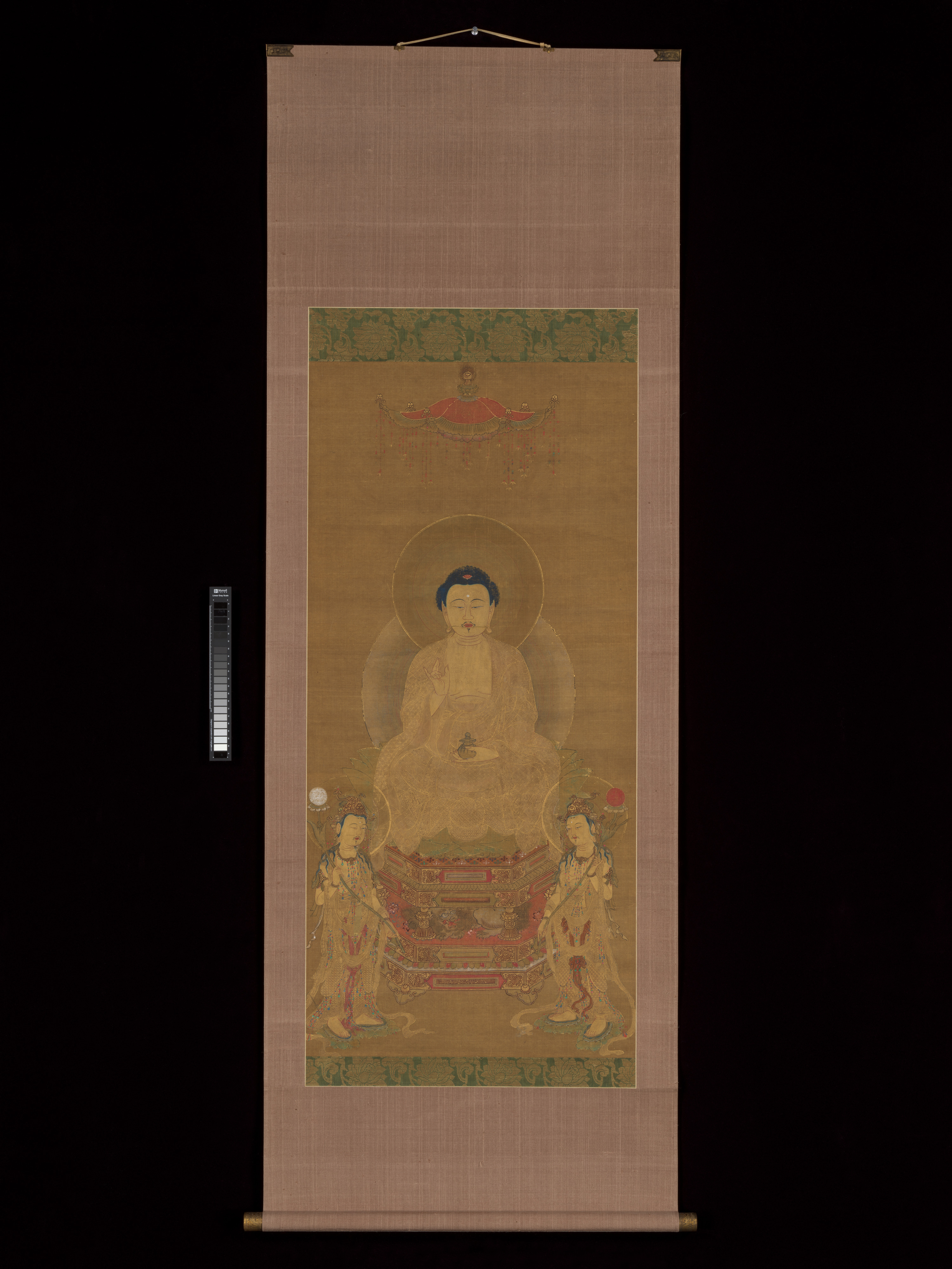Triad of the Medicine Master Buddha Yakushi (Bhaisajya Buddha)
Not on view
This painting depicts a rare Japanese painted depiction of Yakushi (Sanskrit: Bhaisajyaguru), the Medicine Master Buddha, an iconography better known in Japan through sculpture. Commonly referred to as a Yakushi triad, the central Buddha is shown with two attendants: Nikkō (Suryaprabha), the bodhisattva of the sun (to the right), and Gakkō (Candraprabha), the bodhisattva of the moon (to the left). Here, Yakushi as the central figure of worship, is significantly larger than the bodhisattvas. He cradles a small medicine jar in one hand, while the other is raised in a rare form of the “Have no fear” (abhaya varada) mudra both of which identify him as the medicine Buddha. The bodhisattvas are ornately decorated and hold staffs with tips that cradle the sun and moon.
Although Yakushi is also known for Beryl radiance and frequently depicted with blue skin in India and Tibet in this painting his golden skin is a reflection of the Chinese standard and an example of the transmission of Buddhism from China to Japan through Korea. Introduced to Japan in the seventh century A.D, Yakushi still has relevance in death memorials, such as the ‘Thirteen Buddha’ memorial where Yakushi is the deity of the forty-ninth day after death.
This image cannot be enlarged, viewed at full screen, or downloaded.
This artwork is meant to be viewed from right to left. Scroll left to view more.



